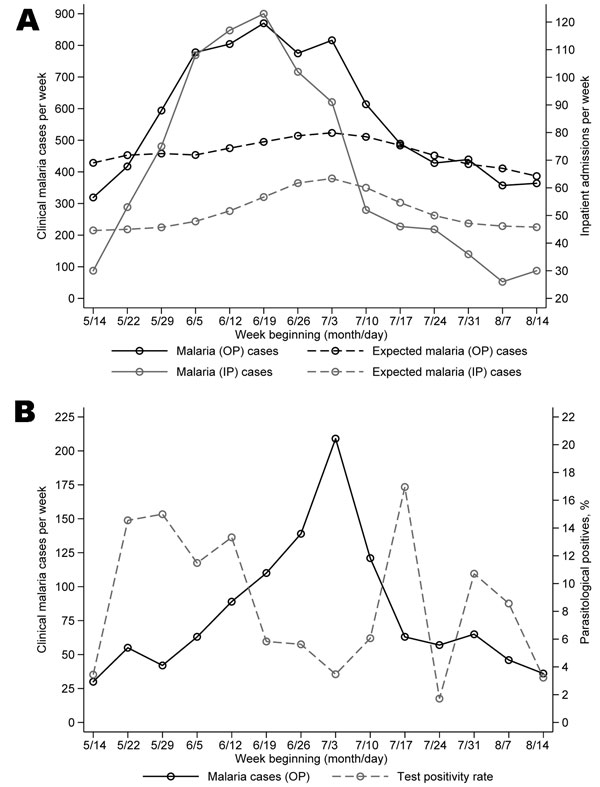Volume 13, Number 5—May 2007
Letter
Detecting Epidemic Malaria, Uganda
Figure

Figure. (A) Weekly observed and expected numbers of outpatient (OP) and inpatient (IP) cases of clinically diagnosed malaria from to 5 sentinel health centers in Kabale district, southwestern Uganda, May–July 2006. B) Weekly numbers of clinically diagnosed malaria cases and the proportion of cases subsequently testing positive for Plasmodium falciparum infection by rapid diagnostic test at Bufundi, Kabale district, southwestern Uganda, May–July 2006.
Page created: June 25, 2010
Page updated: June 25, 2010
Page reviewed: June 25, 2010
The conclusions, findings, and opinions expressed by authors contributing to this journal do not necessarily reflect the official position of the U.S. Department of Health and Human Services, the Public Health Service, the Centers for Disease Control and Prevention, or the authors' affiliated institutions. Use of trade names is for identification only and does not imply endorsement by any of the groups named above.